RIP to Hank Foiles, who had an 11-year career as a catcher in the 1950s and ’60s. A member of the Virginia Sports Hall of Fame, Foiles died in Virginia Beach on May 21 at the age of 94. He played for the Cincinnati Reds (1953, 1962-63), Cleveland Indians (1953, 1955-56, 1960), Pittsburgh Pirates (1956-59), Kansas City Athletics (1960), Detroit Tigers (1960), Baltimore Orioles (1961) and Los Angeles Angels (1963-64).
Henry Lee Foiles Jr. was born in Richmond, VA, on June 10, 1929. His father, Henry Sr., played minor-league baseball in the Virginia area during the 1910s. Henry Jr. began to make his name as a high school athlete in Granby High School in Norfolk. He was an All-Tidewater football player as a center in 1945, and he played defense and kicked as well. Foiles was also an all-state catcher and a javelin thrower on the track team. One of the pitchers he caught was lefty Chuck Stobbs, who would win 100 games in the majors over a 15-year career. As a senior in 1946, Foiles was named Norfolk’s outstanding high school football player of the year by the Norfolk Sports Club. After graduating, he spent a year attending the University of Virginia and was signed by the New York Yankees in October 1947. He would become one of a long line of Yankee catching prospects blocked by the rise of Yogi Berra.
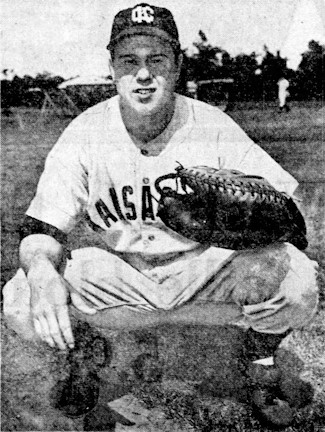
A 1970 column from Morning Herald (Hagerstown, MD) editor Frank Lovinski explained how Foiles got involved with the javelin. “While Foiles was practicing on the baseball field one day an errant javelin came sailing onto the field,” Lovinski wrote. He picked up the javelin and threw it beyond the person who had originally tossed it. The track coach recruited him on the spot.
Foiles began his well-traveled baseball career with the Manchester Yankees of the New England League in 1948. He batted .231 with 4 home runs in his first taste of pro ball. Foiles made the rounds in the Yankees farm system and had some success, such as batting .311 in 64 games with Binghamton and Kansas City, then a Yankees farm team in the American Association, in 1950. He had some seasons where he struggled at the plate, and he was a good if occasionally erratic defensive catcher. The Cincinnati Reds drafted him from Kansas City in the winter of 1951. He was optioned to the minors and loaned to a Phillies Triple-A team in Ottawa in 1952, but his season was cut short after 28 games due to torn knee ligaments.
Foiles made Cincinnati’s 1953 Opening Day roster and made his first start on April 21 in St. Louis. He was 1-for-4 on the day and got his first career hit off Cardinals starter Harvey Haddix. He singled in each of his first two starts, but those were the only hits he got in 13 at-bats. The major-league rosters were reduced to 25 on May 13, and the Reds sold Foiles’ contract to Cleveland for an undisclosed amount. He had a hit in 7 at-bats for the Indians but was sent to the minor leagues when Cleveland acquired catcher Joe Ginsberg in a trade with Detroit. In 12 big-league games, Foiles had 3 hits in 20 at-bats for a .150 batting average. He also showed off his strong throwing arm. Five baserunners attempted to steal on Foiles, and he threw out 4 of them.
Foiles spent all of 1954 with the Triple-A Indianapolis Indians and had a monster offensive season, with a .332 batting average, 17 home runs and 59 runs driven in. He also acted as the regular catcher for Cleveland phenom Herb Score, and both men joined the parent club in 1955. Score was the rookie sensation for Cleveland, and Foiles was a backup to veteran catcher Jim Hegan. His first three hits of the season were all doubles, and Foiles was a steady hitter all season long. He got his chance at revenge against his first club the Yankees on May 3. He had 2 hits in 3 at-bats, including a double, and he scored the tying run by racing home on a Bobby Avila single and plowing into Yankees catcher Yogi Berra, kicking the ball out of his mitt and all the way to the backstop. The play, which was charged as an error on Berra, allowed Al Smith and George Strickland to score on the play and lead to a 7-4 Cleveland win. Foiles hit his first career home run late in the season off Detroit’s Bob Miller, and he ended the season with a .261/.354/.369 slash line in 62 games.
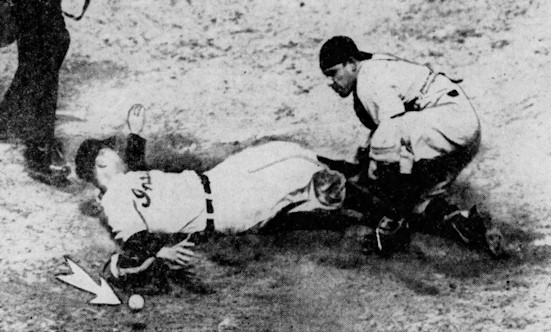
Foines made just one more appearance for Cleveland, at least during this stay. He caught an inning on April 17, 1956, and then Cleveland decided to go with two catchers, Hegan and Hal Naragon. Foiles was traded to Pittsburgh for infielder/outfielder Preston Ward, and the 26-year-old catcher was about to embark on his steadiest time in the major leagues. Foiles played in 79 games for Pittsburgh and, though he batted just .212, homered 7 times. He also continued to throw out baserunners at an above-average rate and play well behind the plate. The Pirates had multiple catchers competing for the starting job in 1957, but Foiles ended up making the majority of the starts. He was a .300 hitter over the first half of the season, and he was named an All-Star reserve by NL manager Walt Alston. The news disrupted Foiles’ planned summer vacation with his wife Joyce and children. “I called Joyce before we left Pittsburgh and said, ‘Honey, I can’t come down to Virginia like we planned.’ She wanted to know how come and I said I had to be in St. Louis for a ball game,” he explained. “She didn’t like that idea at all, but then I said I was on the All-Star squad. After she picked herself up off the floor, she complimented me.” Foiles wasn’t expected to see much work as a backup for Reds catcher Ed Bailey, but he ended up in the middle of an exciting bottom of the ninth inning. The AL was leading 6-2 when Stan Musial led off the inning with a walk against Billy Pierce. Willie Mays tripled him home and scored on a wild pitch. Foiles, batting for Bailey, singled, advanced to second base on a Gus Bell walk and scored on a 1-out Ernie Banks single off Don Mossi. Bell tried to score on the play but was thrown out at home, and the AL hung on to win 6-5. “I haven’t had many thrills in baseball but this is it, so far,” Foiles said after the game.
Over the second half of the season, Foiles slumped somewhat and ended the year with a .270/.352/.431 slash line in a career-high 109 games. He hit 9 home runs and had 36 RBIs, both of which were also career bests. He played in 104 games for the Bucs in 1958, but aside from a modest 8-game hitting streak in April, he struggled with the bat and hit just .205. He battled a variety of injuries that included everything from hurting his elbow to running into a box seat railing at Forbes Field face-first, which required 21 stitches in his chin. Pittsburgh added catcher Smoky Burgess for 1959, and Foiles batted .225 as a backup. In December 1959, Pittsburgh sent converted pitcher Dick Hall and infielder Ken Hamlin to the Kansas City A’s for catcher Hal Smith. Days later, Foiles was sent to the A’s as the player to be named later. Foiles’ time with the team lasted for 6 games and 7 at-bats; he had 4 singles and 3 walks for a .571 batting average and .700 on-base percentage. Foiles was traded back to Pittsburgh on June 1 for catcher Danny Kravitz. One day later, he was shipped to Cleveland for outfielder John Powers. Foiles hit .279 in 24 games for Cleveland before he was traded — for the third time that season — to Detroit for catcher Red Wilson and infielder Rocky Bridges. The Tigers had added another catcher, Harry Chiti, in a separate trade, but Foiles got into 26 games for the team and hit .250 to finish his whirlwind season with a .282 batting average in 56 games for four teams — though he only played for three of them.
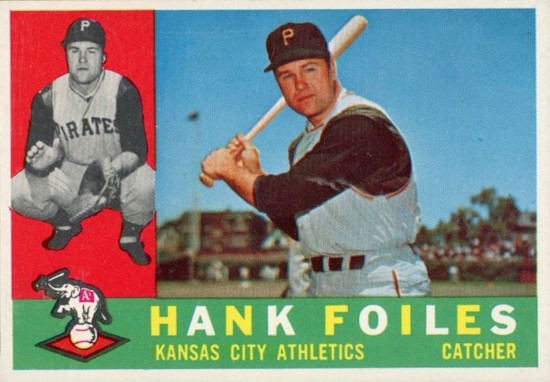
Foiles’ transaction sheet wasn’t full yet. Baltimore drafted him that November to add catching depth behind starter Gus Triandos. Unfortunately, Foiles fractured the ring finger on his right hand in spring training, and when it didn’t heal properly, surgery was required and kept him out of action until the end of June. He appeared in 43 games in 1961 and hit .274 with 6 doubles and 6 home runs. Cincinnati purchased his contract in April 1962, and he produced a remarkably similar season for the Reds: .275 batting average, 6 doubles, 7 home runs, 25 RBIs. He was an unexpected source of power for Cincinnati, including hitting a first-inning grand slam off the Dodgers’ Johnny Podres in a 12-10 Reds win on June 24. Even so, Foiles only appeared in one game for the Reds in 1963. He was 0-for-3 with a walk against St. Louis on May 5 and was released days later. He quickly signed with the Los Angeles Angels and joined the big-league club in June. He hit for a .207 batting average in 41 games and was released at the end of the season. The Angels invited Foiles to spring training in April 1964 along with several other veterans like Jimmy Piersall and Joe Amalfitano. Foiles made the team but was limited to 4 pinch-hitting appearances, with one hit. His contract then was sold to Hawaii of the Pacific Coast League, where he played in 20 games for the Islanders. It was his final season as a ballplayer, as Foiles retired at the age of 35. According to his son, Hank Foiles III, he came back home to take care of his wife Joyce, who was ill.
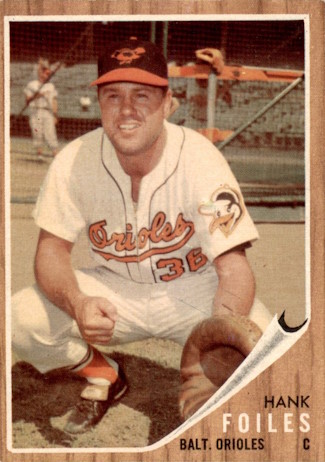
Foiles played in 608 games over his 11-year career and had a .243/.321/.392 slash line. His 353 hits included 59 doubles, 10 triples and 46 home runs. He scored 171 times and drove in 170 runs. While he was considered one of the fastest catchers during his playing career, he had just 3 stolen bases in 10 attempts. Defensively, Foiles led the National League in caught stealing percentage in 1958 when he threw out 50% of baserunners. For his career, he had an above-average 42% caught stealing percentage.
Foiles returned to the Norfolk area and got into the insurance business following his retirement. He frequently spoke to banquet audiences around the state of Virginia. He was inducted into the Virginia Sports Hall of Fame in 1987, and the Pirates sent him a jersey that could be hung in his display. “Pittsburgh will always be the fondest memories I have of the game,” he said. Foiles later wrote his memoir, A Pirates Journey, with baseball historian Doug Williams. Joyce Foiles died in 2012, leaving Hank and sons Hank and Marc. By October 2023, Foiles had moved into a retirement community, though an article in the Daily Press showed he had plenty of memories from his playing days. He noted in the story that he was the first major-leaguer to wear contact lenses. While playing against the Yankees in what must have been a spring training game, one of Foiles’ lenses popped out of his eye, and he, the umpire and Yogi Berra went down on their hands and knees, looking for the missing lens. Finally, Pirates pitcher Charlie “Whammy” Douglas, who wore thick glasses, walked down from the mound, picked up the lens and asked, “Is this what you’re looking for?”
In the Press interview, Foiles admitted that he didn’t watch baseball anymore, but he didn’t begrudge the modern players the money they make. He spent his final years enjoying time with his grandchildren and great-grandchildren. “I’ve had a good life. I don’t know whether it’s been a wonderful life, but it’s been good,” he said. “I enjoy life. I enjoy every day. The day I don’t enjoy life is the day I’m dead. And I plan to be around a long time.”
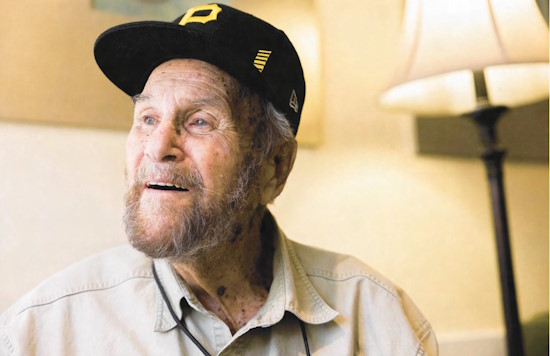
For more information: The Virginian-Pilot
Follow me on Instagram: @rip_mlb
Follow me on Facebook: ripbaseball
Follow me on Bluesky: @ripmlb
Follow me on Threads: @rip_mlb
Follow me on X: @rip_mlb
Support RIP Baseball




A very interesting article about a very well travelled player.
One minor correction. The Reds catcher referred to as Bob Bailey should be Ed Bailey.
Keep up the great work!!
LikeLiked by 1 person